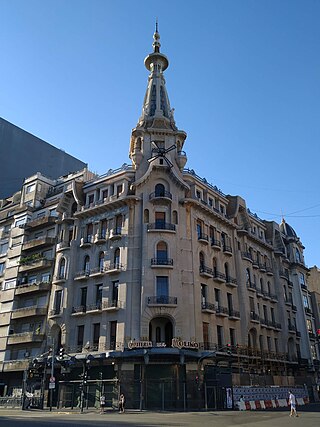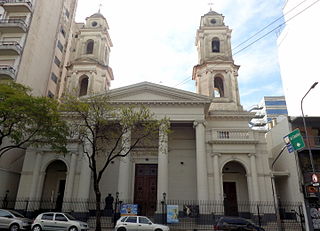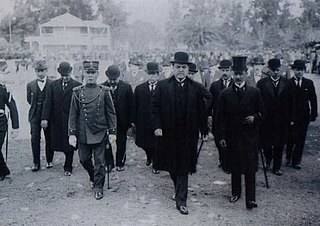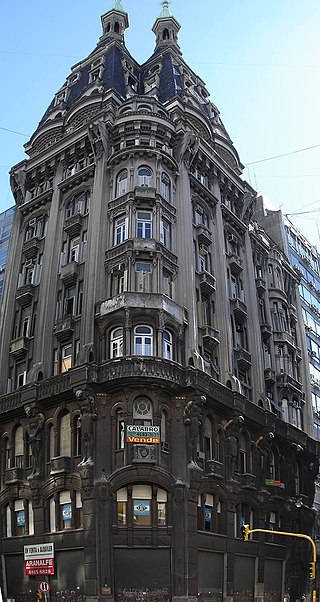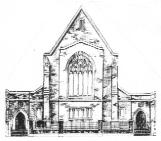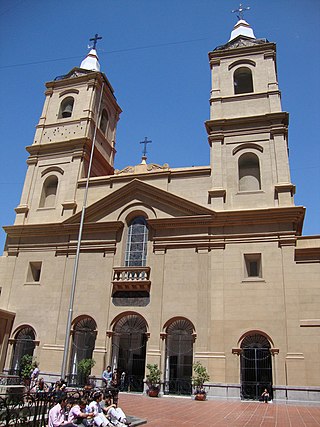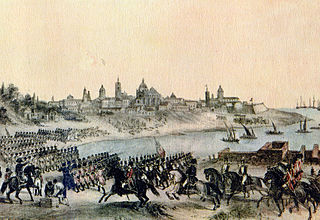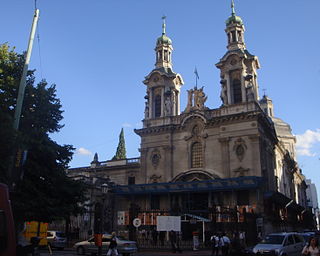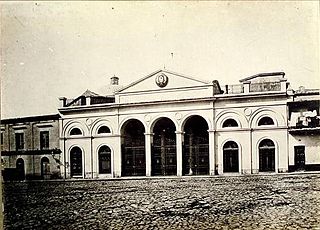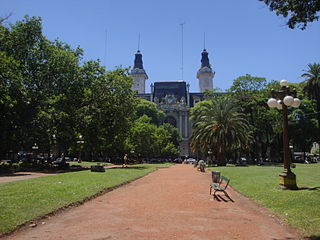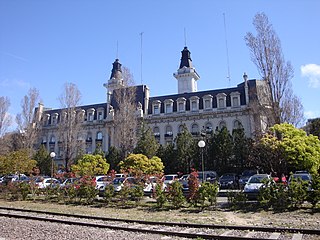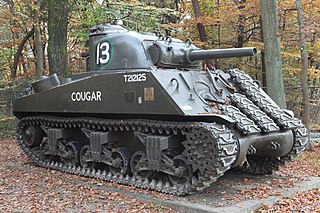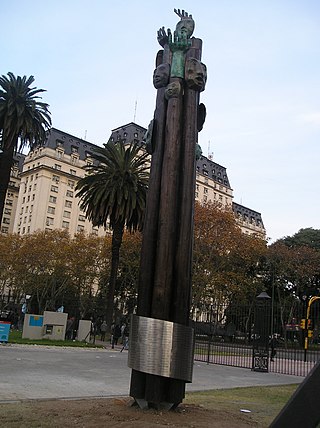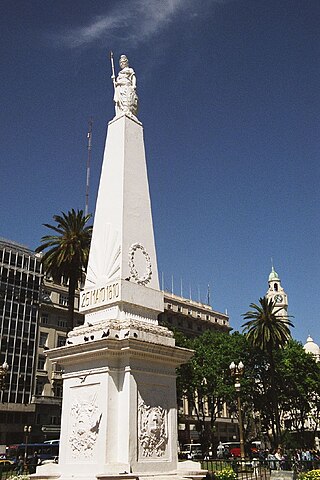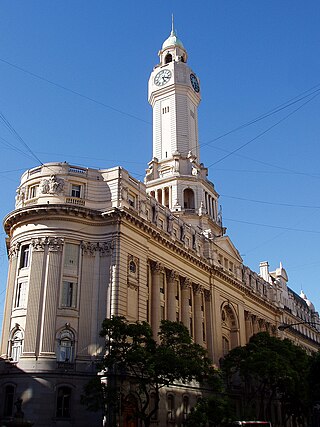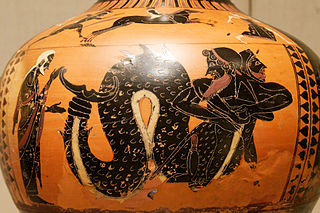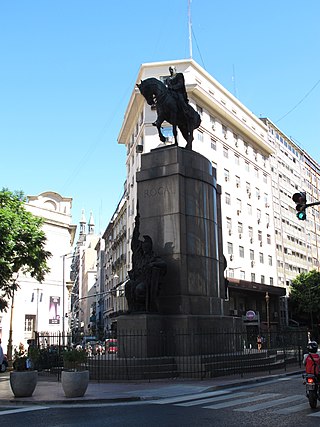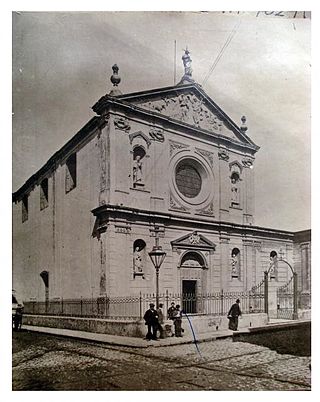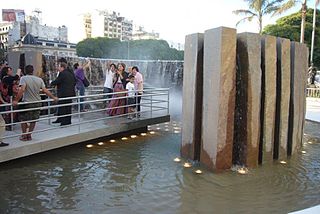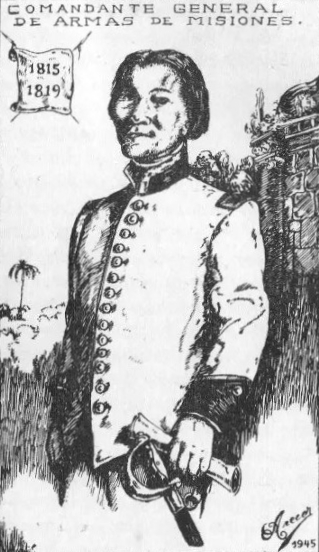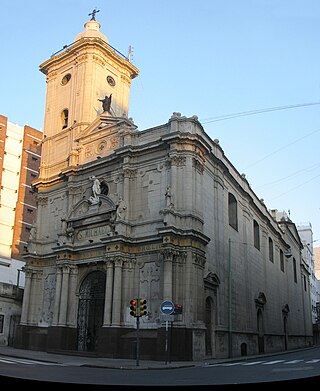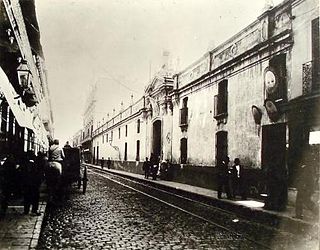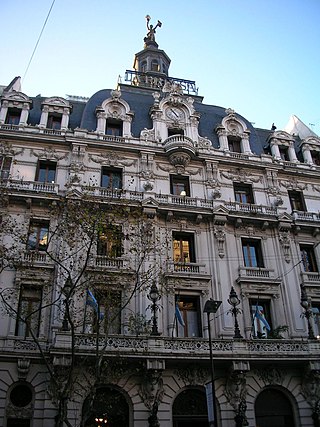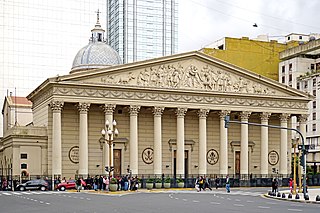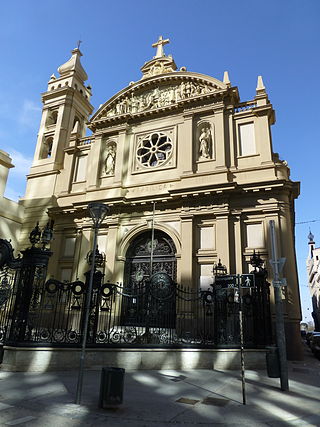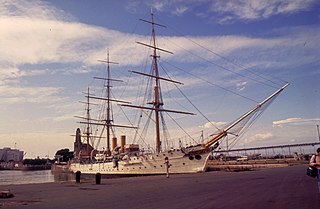Self-guided Sightseeing Tour #1 in Ciudad Autónoma de Buenos Aires, Argentina
Legend
Guided Free Walking Tours
Book free guided walking tours in Ciudad Autónoma de Buenos Aires.
Guided Sightseeing Tours
Book guided sightseeing tours and activities in Ciudad Autónoma de Buenos Aires.
Tour Facts
10.2 km
266 m
Experience Ciudad Autónoma de Buenos Aires in Argentina in a whole new way with our free self-guided sightseeing tour. This site not only offers you practical information and insider tips, but also a rich variety of activities and sights you shouldn't miss. Whether you love art and culture, want to explore historical sites or simply want to experience the vibrant atmosphere of a lively city - you'll find everything you need for your personal adventure here.
Individual Sights in Ciudad Autónoma de Buenos AiresSight 1: Confitería El Molino
The Confitería del Molino is an historical Art Nouveau style confitería (coffeehouse) in Buenos Aires, Argentina, located in front of the Palace of the National Congress and the Congressional Plaza, on the intersection of Callao and Rivadavia avenues in the barrio of Balvanera.
Sight 2: Museo de la Mujer
The Museum of Argentine Women was created on August 11, 2006 and is located at Pasaje Rivarola 147 in the Autonomous City of Buenos Aires. It was declared of cultural interest by the Chamber of Deputies of the Nation by Resolution O.D. No. 2378 June 2007. Among its purposes, it seeks to be an archive and preserve the cultural history of women, through the promotion and production of art, from dialectics and emphasizing the gender perspective as a construction of the signifier.
Sight 3: Teatro Avenida
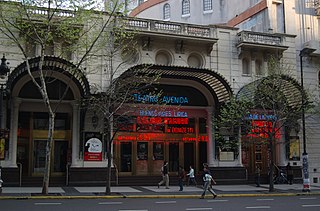
The Avenida Theatre is a theatre in Buenos Aires, Argentina.
Sight 4: Parroquia Nuestra Señora de Montserrat
The Parish Church of Nuestra Señora de Montserrat is a Roman Catholic church in the autonomous city of Buenos Aires.
Wikipedia: Parish Nuestra Señora de Montserrat (Buenos Aires) (EN), Website
Sight 5: Plazoleta Intendente Joaquín S. de Anchorena
Joaquín Samuel de Anchorena (1876–1961) was an Argentine lawyer and politician, noted for being mayor of Buenos Aires between 1910 and 1914.
Sight 6: Edificio Otto Wulff
Otto Wulff building is a historic building of Buenos Aires. It is located in the corner of Belgrano and Peru, neighborhood of Monserrat.
Sight 7: Iglesia Presbiteriana San Andrés
The San Andrés Presbyterian Church is a Christian church whose origin dates back to the arrival of Scottish settlers in Argentina at the beginning of the nineteenth century.
Sight 8: Basílica Nuestra Señora del Rosario
The Santo Domingo Convent, or Basilic of Our Lady of the Rosary and Convent of Santo Domingo is a convent for Our Lady of the Rosary located in the Monserrat neighborhood of Buenos Aires. Built during the colonial times, it was the scenario of a military conflict during the British invasions of the Río de la Plata. It holds as well the tomb of the Argentine national hero Manuel Belgrano.
Sight 9: Plaza de la Defensa
The second English invasion of the Río de la Plata, also called the second British invasion, took place after having had to capitulate in Buenos Aires in 1806 during the first of the English Invasions of the Viceroyalty of the Río de la Plata, the British fleet continued in the Río de la Plata waiting for the reinforcements that had been requested from England. Once reinforcements arrived, in 1807 he began a second invasion that culminated in his defeat and the restoration of Spain's power in the Río de la Plata with Santiago de Liniers as viceroy. This was the second and last English invasion although, technically, it was only one invasion. The ship that had transported the British in the first expedition never left the Río de la Plata and remained blockading the port of Buenos Aires. Nor was it only English since, among the invaders, there were also Scots.
Sight 10: La Trastienda Club
La Trastienda Club is a prominent café-concert style venue in Buenos Aires.
Sight 11: Juan B. Ambrosetti ethnographic museum
The Juan B. Ambrosetti Museum of Ethnography is an Argentine museum overseen by the University of Buenos Aires Faculty of Philosophy and Letters and located in Buenos Aires.
Wikipedia: Juan B. Ambrosetti Museum of Ethnography (EN), Website
Sight 12: Museo de la Ciudad
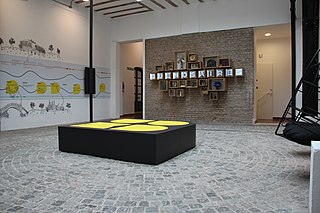
The Buenos Aires Museum, called "Museum of the City" until 2021, is an institution of the city of Buenos Aires whose objective is:
Sight 13: Plazoleta San Francisco
The Basilica and Convent of San Francisco de Asís is a Catholic temple located at 380 Alsina Street, in the historic center of the city of Buenos Aires (Argentina), Monserrat neighborhood. It belonged to the Franciscan order, the first to receive a piece of land in the settlement founded by Juan de Garay in 1580.
Sight 14: Antigua Sede del Congreso Nacional
The Old National Congress is the first headquarters of the Congress of the Argentine Nation, inaugurated in 1864 by President Bartolomé Mitre and closed in 1905, when the sessions were moved to the current Palace of Congress. It was located in Plaza de Mayo, on the corner of the current Balcarce and Hipólito Yrigoyen streets, meters from the Casa Rosada, seat of the Executive Power.
Sight 15: Plaza Presidente Juan Domingo Perón
Plaza Juan Domingo Perón is located in the Monserrat district of Buenos Aires, located in front of the Customs House, 200 metres from the Casa Rosada.
Sight 16: Aduana
The Buenos Aires Customs House (Aduana) is a government building and architectural landmark in the Montserrat section of Buenos Aires.
Sight 17: M4 Sherman
The M4 Sherman, officially medium tank, M4, was the medium tank most widely used by the United States and Western Allies in World War II. The M4 Sherman proved to be reliable, relatively cheap to produce, and available in great numbers. It was also the basis of several other armored fighting vehicles including self-propelled artillery, tank destroyers, and armored recovery vehicles. Tens of thousands were distributed through the Lend-Lease program to the British Commonwealth, Soviet Union, and other Allied Nations. The tank was named by the British after the American Civil War General William Tecumseh Sherman.
Sight 18: Del cielo los vieron llegar
Nora Patrich is an Argentine plastic artist based in Vancouver between 1982 and 2007, and since that date also in Buenos Aires. She has been awarded several distinctions in Argentina and Canada. Among his notable works is the Monument to the victims of the Bombing of Plaza de Mayo, located in the garden of the Casa Rosada in Argentina. His paintings are in the Vancouver Art Gallery (Canada), Casa de las Américas (Cuba) and the Museum of the National Palace of Guatemala, among other centers.
Sight 19: Museo Casa Rosada
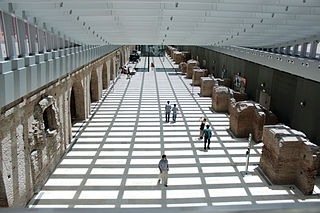
The Casa Rosada Museum is an Argentine museum located in the old galleries of the Taylor Customs House in the city of Buenos Aires, inaugurated on May 24, 2011. It functions as an annex to the Casa Rosada and exhibits some 10,000 historical pieces that belonged to many presidents of the Argentine Republic, originating from the collection of the Casa Rosada Presidential Museum. It was inaugurated in 2011 during the presidency of Cristina Kirchner.
Sight 20: Pink House
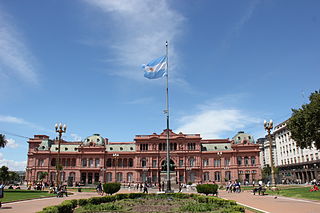
The Casa Rosada, literally the Pink House, is the president of the Argentine Republic's official workplace, located in Buenos Aires. The palatial mansion is known officially as Casa de Gobierno. Normally, the president lives at the Quinta de Olivos, the president of Argentina's official residence, located in Olivos, Greater Buenos Aires. The characteristic color of the Casa Rosada is baby pink, and it is considered one of the most emblematic buildings in Buenos Aires. The building also houses a museum, which contains objects relating to former presidents of Argentina. It has been declared a National Historic Monument of Argentina.
Sight 21: Equestrian monument to General Manuel Belgrano

The Equestrian monument to General Manuel Belgrano is a landmark of Buenos Aires, Argentina. It is located at Plaza de Mayo, in front of the Casa Rosada. It depicts General Manuel Belgrano holding the Flag of Argentina, and it is made of bronze over a pedestal of granite.
Wikipedia: Equestrian monument to General Manuel Belgrano (EN)
Sight 22: Pyramid of May
The Pirámide de Mayo, located at the hub of the Plaza de Mayo, is the oldest national monument in the City of Buenos Aires. Its construction was ordered in 1811 by the Primera Junta to celebrate the first anniversary of the May Revolution. It was renovated in 1856, under the direction of Prilidiano Pueyrredón. In 1912, after having undergone many modifications, it was moved 63 metres to the east, with the idea that a much larger monument would eventually be constructed around it.
Sight 23: Cabildo de Buenos Aires
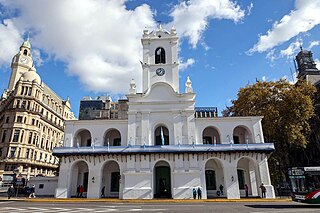
The Cabildo of Buenos Aires is the public building in the city of Buenos Aires, Argentina, that was used as a seat of the town council during the colonial era and the government house of the Viceroyalty of the Río de la Plata.
Sight 24: Legislatura de la Ciudad Autónoma de Buenos Aires
The Buenos Aires Legislature Palace houses the Legislature of the City of Buenos Aires, Argentina. It is an architectural landmark in the city's Montserrat district, situated in a triangular block bounded by the streets Hipólito Yrigoyen Street, Presidente Julio A. Roca Avenue and Perú Street. Built of grey granite, it has a Neoclassical design. The building is open to the public on week-days only. The building contains the Esteban Echeverría Library, Salón Rosado, and a carillon which, when it was installed in 1930, was the largest in South America.
Wikipedia: Buenos Aires City Legislature Palace (EN), Website
Sight 25: Tritón
Triton is a Greek god of the sea, the son of Poseidon and Amphitrite. Triton lived with his parents in a golden palace on the bottom of the sea. Later he is often depicted as having a conch shell he would blow like a trumpet.
Sight 26: Julio Argentino Roca
The monument to Julio Argentino Roca, in the city of Buenos Aires, Argentina, is a work made up of three bronze sculptures on a red polished granite base. Inaugurated in 1941, he honors Lieutenant General Julio Argentino Roca (1843–1914), political, military and statesman Argentine, architect of the desert conquest, twice president of the Argentine nation and representative of the so -called generation of the eighties that directed the Argentine politics for more than thirty years.
Wikipedia: Monumento a Julio Argentino Roca (Buenos Aires) (ES)
Sight 27: Iglesia San Juan Bautista
The Church of San Juan Bautista, known at the end of the nineteenth century as "San Juan de los franceses", because it was frequented by the French community of Buenos Aires, where they showed special devotion to an image of San Bernardo, is a Catholic church located on Alsina Street, on the corner of Piedras, in the neighborhood of Monserrat, in Buenos Aires. The primitive church was built in 1654, given its poor condition it was rebuilt in 1719. It was completely rebuilt in 1767, demolished in 1778 to build the current construction, completed in 1797. In 1942 it was declared a National Historic Monument by decree of the PEN. It was also known as the "church of the Basques", because the Betharramite or "Bayonese" fathers who managed it carried out their apostolate for the Basque community.
Sight 28: Club Español
The Spanish Club is located at 172/78 Bernardo de Irigoyen Street, meters from the intersection between Avenida 9 de Julio and Avenida de Mayo, in the neighborhood of Monserrat, in Buenos Aires, Argentina.
Sight 29: Cataratas del Iguazú, Misiones
The monument to the Iguazu cataracts is located in the Plazoleta Province of Misiones, at the corner of May Avenue and 9 de Julio Avenue in Buenos Aires (Argentina). It is located in one of the most central points of the city, a few blocks from the Obelisk and the Casa Rosada. It was inaugurated on December 11, 2013.
Sight 30: Andrés Guacurarí y Artigas
Andrés Guacurarí, Andrés Guasurarí or Andrés Guaçurarí y Artigas, known as Comandante Andresito, was a Guaraní missionary military officer and caudillo. He was one of the first federal caudillos of the United Provinces of the Río de la Plata. Of Guaraní origin, he governed between 1815 and 1819 the Province of the Missions, of which the current Argentine province of the same name is only a remnant. He was one of the most faithful collaborators of the general of the Banda Oriental José Gervasio Artigas, who sponsored him and adopted him as a son; allowing him to sign as Andrés Artigas.
Sight 31: San Miguel Arcángel
Church of San Miguel de Arcángel is a Catholic church in Buenos Aires, Argentina, declared a national historic monument in 1983.
Wikipedia: Church of San Miguel de Arcangel (Buenos Aires) (EN)
Sight 32: Plaza Roberto Arlt
Roberto Arlt Square is located on the corner of Rivadavia and Esmeralda streets, in Buenos Aires. Its name recalls the famous Argentine writer.
Sight 33: Lisandro de la Torre
The Monument to Lisandro de la Torre is a sculpture made in his honor, located in the neighborhood of San Nicolás in the City of Buenos Aires, Argentina.
Sight 34: Casa de la Cultura de la Ciudad
The Buenos Aires House of Culture is an architectural landmark in the Montserrat section of the Argentine capital.
Sight 35: Buenos Aires City Hall
Buenos Aires City Hall was, until 2015, the seat of the Office of the Chief of Government of Buenos Aires, the capital city of Argentina. From its construction in 1914 to the reformation of the city's constitution in 1996, the building was the seat of the City Municipality. It faces the Plaza de Mayo, across from the Casa Rosada presidential palace, in the barrio of Monserrat.
Sight 36: Metropolitan Cathedral
The Metropolitan Cathedral of the Most Holy Trinity, is a Roman Catholic Cathedral in Buenos Aires, the capital city of Argentina.
Wikipedia: Buenos Aires Metropolitan Cathedral (EN), Website
Sight 37: Basílica Nuestra Señora de La Merced
Our Lady of Mercy Church of Buenos Aires is an Argentine Catholic church. It is located on Calle Reconquista corner of Tte. Gen. Juan Domingo Perón Street, in the neighborhood of San Nicolas in Buenos Aires.
Sight 38: Buque Museo Fragata A.R.A. 'Presidente Sarmiento'
ARA Presidente Sarmiento is a museum ship in Argentina, originally built as a training ship for the Argentine Navy and named after Domingo Faustino Sarmiento, the seventh President of Argentina. It is considered to be the last intact cruising training ship from the 1890s.
Share
How likely are you to recommend us?
Disclaimer Please be aware of your surroundings and do not enter private property. We are not liable for any damages that occur during the tours.
GPX-Download For navigation apps and GPS devices you can download the tour as a GPX file.
